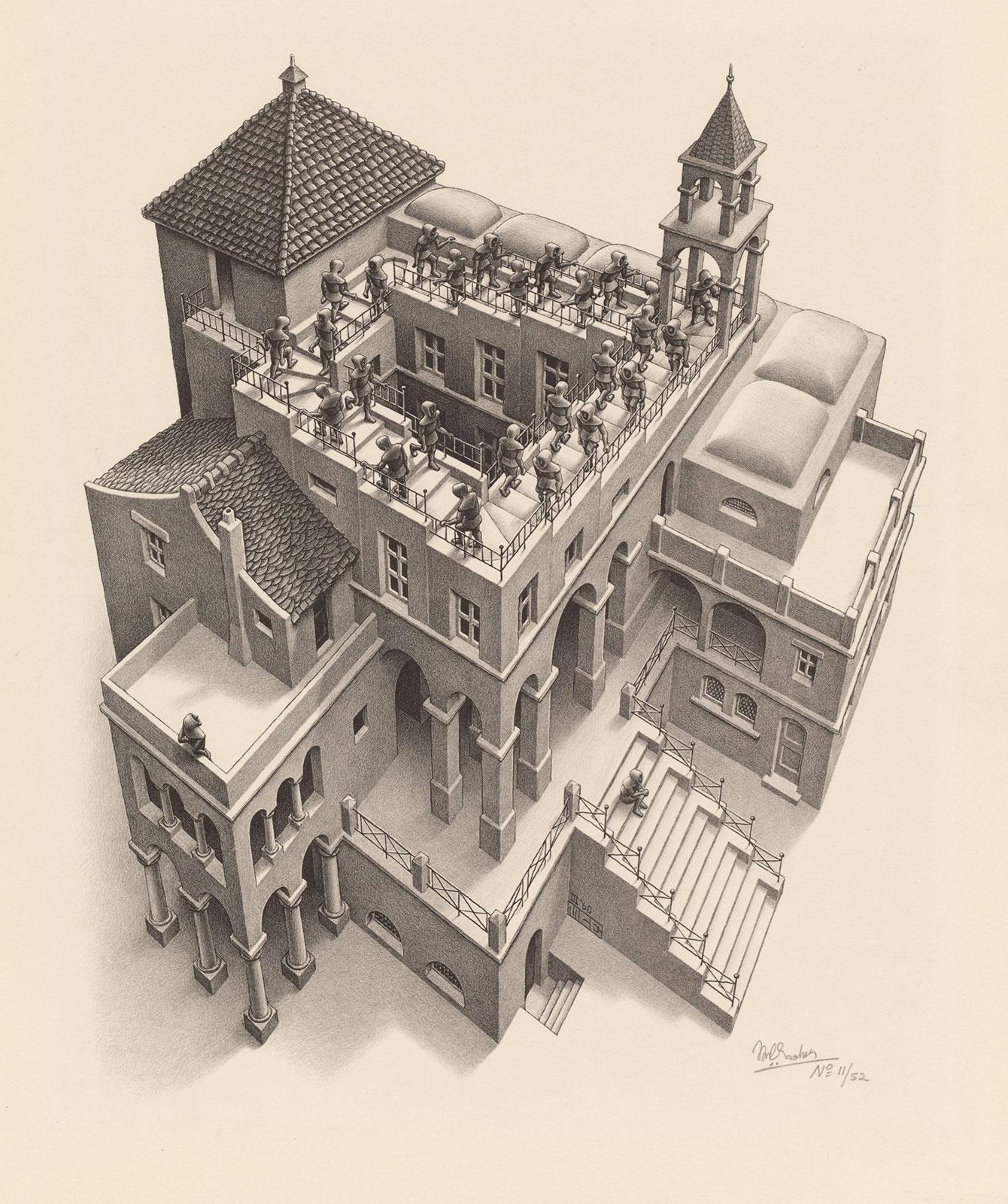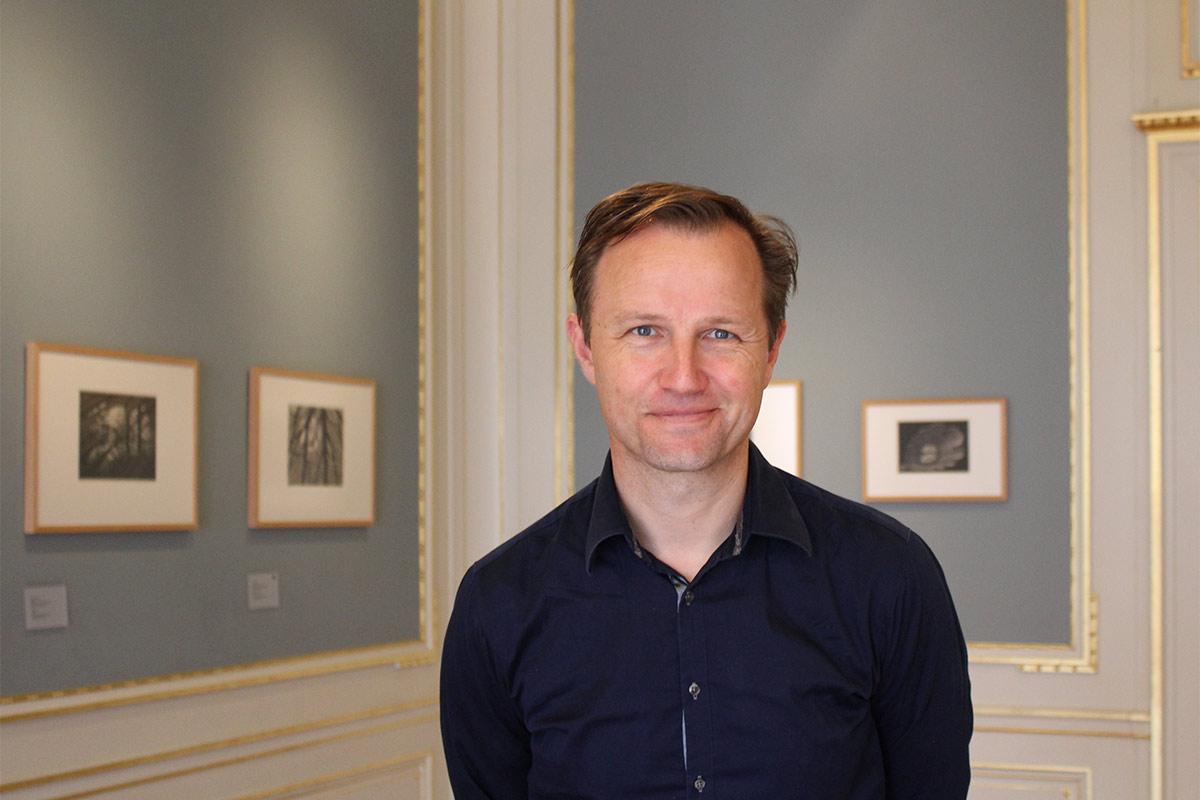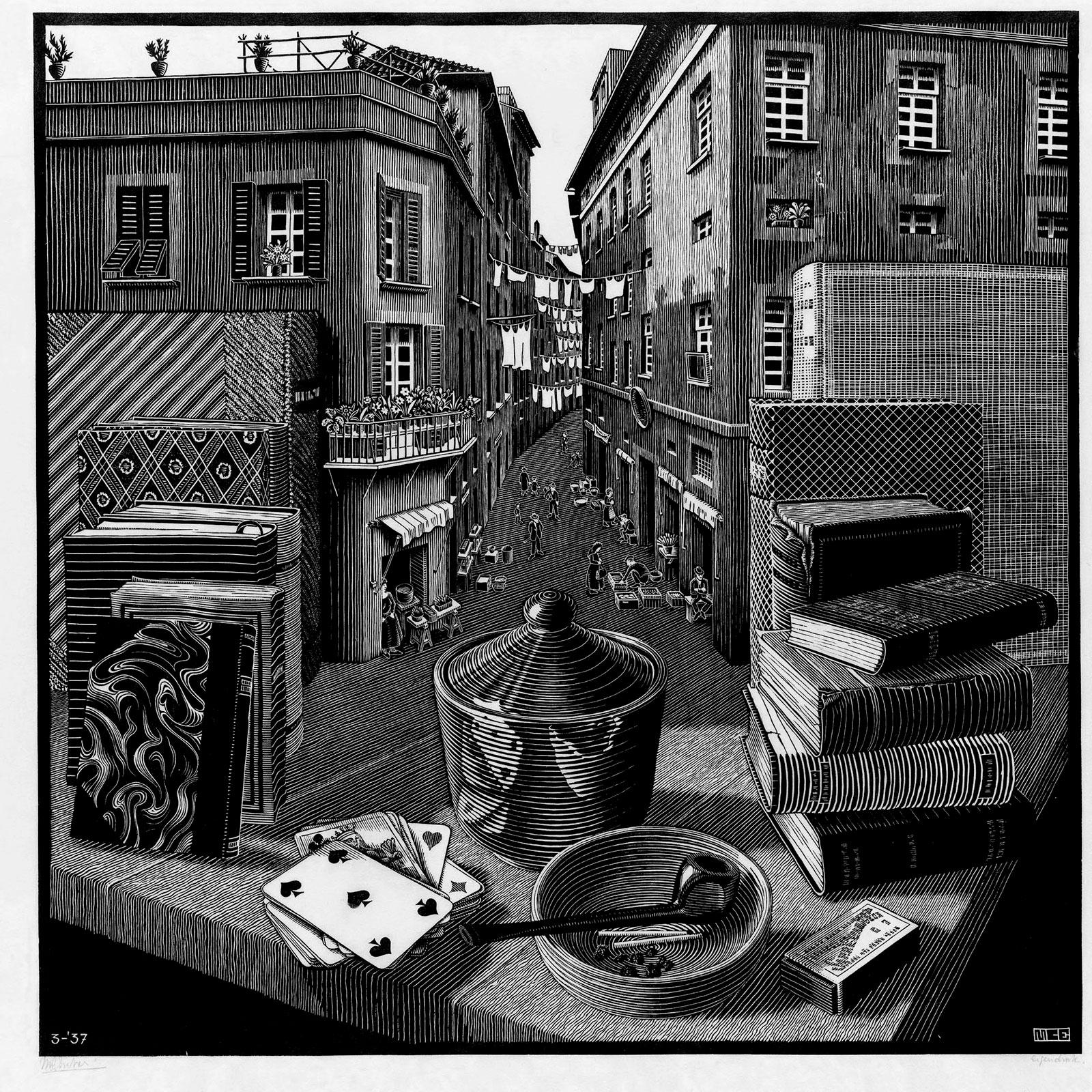

Good Friday, St Matthew Passion Day. For Escher, Easter had always been tied closely to this oratorio by Johann Sebastian Bach. He was not alone: the St Matthew Passion is without a doubt the most popular piece of classical music in the Netherlands. Each year, most of this country is fixated on Bach in the days leading up to Easter. But for Escher this love prevailed all year round. Everything in his life was connected to this composer who resembled him in so many ways. The systematic approach, the rhythm, the repetition, the symmetry: the similarities are considerable.
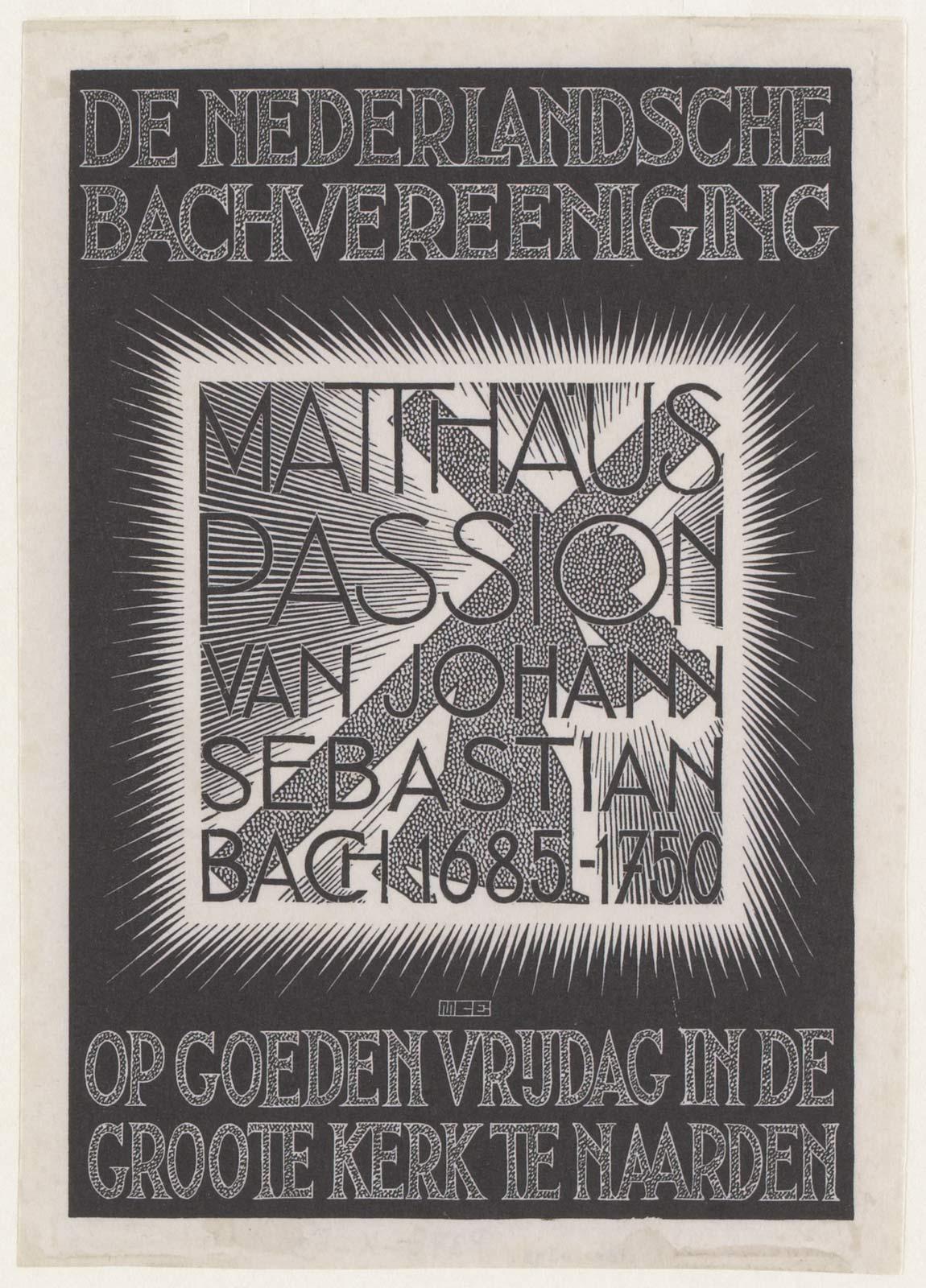
Escher was an enthusiastic concertgoer. Throughout his life, his diaries were filled with dates of important performances scribbled in pencil. The following selection with notes about radio shows and visits to concerts from 1946-48 gives you an idea of how fanatical about Bach he was*.
| 6 September 1946: | Hilversum 2: Bachcantate |
| 26 September 1946: Oude Kerk A'dam: | Kunst der Fuge (Escher was about to give a lecture that evening but he cancelled it at the last moment, stating he ‘would not miss this performance of Kunst der Fuge for the world') |
| 27 September 1946: Naarden: | Hohe Messe |
| 28 March 1947: | Concert St. Nicolaaskerk |
| 14 July 1947: NCRV-radio: | Kunst der Fuge |
| 21 September 1947: Bachzaal: | Das Musikalische Opfer |
| 28 September 1947: Bachzaal: | Cantata |
| 6 February 1948: Jacobi Kerk Utrecht: | St Matthew Passion |
| 11 February 1948: Hilversum 1 23.00 hours: | Violin Sonata Bach |
| 12 February 1948: | Bach concert Recital Hall Concertgebouw |
| 19 February 1948: Hilversum 2 20.15 hours: | Violin Sonata Bach |
| 25 February 1948: | Bach concert Recital Hall Concertgebouw |
| 1 March 1948: | Bach concert Recital Hall Concertgebouw |
| 23 March 1948: | Baarnsch Lyceum: Willem Andriessen: Bach |
| 3 April 1948: | Concert Museum Amstelkring: harpsichord |
| 22 September - 4 October 1948: | Bach week |
| 27 September 1948: | Oude Kerk Amsterdam: Organ concert Anton van der Horst. |
| 2 October 1948: | Stefan Askenase plays Bach |
| 21 November 1948: | Bach concert Concertgebouw |
This rhythm continued over the next few years—Escher continued to attend musical concerts frequently.
Escher mostly listened to Bach, but the latter’s music also inspired him in his own work. He tried to translate Bach’s compositions into a graphic form, but his experiments did not lead to a result that was acceptable to the artist. He did produce an animation of Bach’s first Prelude (in C major) in the shape of a flip book, called ‘Graphic Representation of the Music in Two Dimensions’. See also the story ‘Escher and Bach’, by former curator Dunja Hak, in which she talks about Escher’s love for the composer. And this story about his love for music in general. And, of course, the rhythm, repetition and symmetry that are so specific to Bach constantly crop up in Escher’s work.
In February 1938 he carved this woodcut for the Netherlands Bach Society (‘De Nederlandsche Bachvereeniging’) as a cover for the programme of the St Matthew Passion in Naarden. The society was founded in 1921 to perform Bach’s St Matthew Passion in Naarden on Good Friday. Since then, it has performed the work in De Grote Kerk (Great Church) or Sint-Vituskerk (St Vitus Church) on an annual basis, with fewer seats and in a church, as a counterbalance to Willem Mengelberg’s performances in the Concertgebouw in Amsterdam. In Escher’s design, Jesus’s cross cuts the frame in which he is captured in two, with the ‘O’ circling his bowed head.
Source
[*] Wim Hazeu, M.C. Escher, Een biografie, Meulenhoff, 1998, page 313
More Escher today

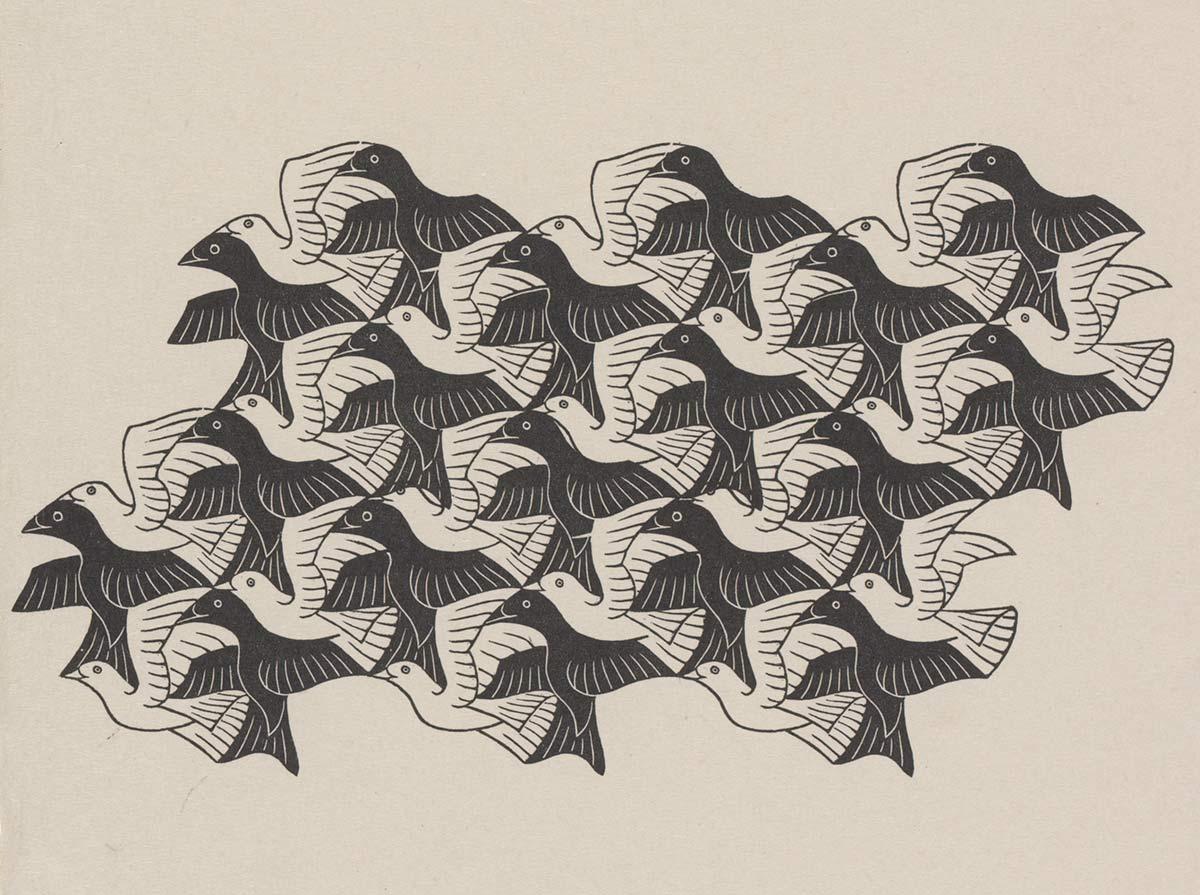
Birds welcoming Spring
